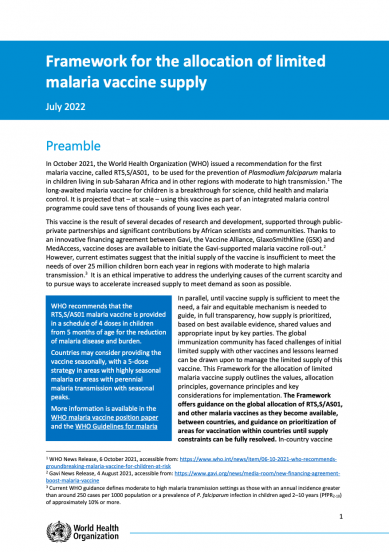
Framework for the allocation of limited malaria vaccine supply
In October 2021, the World Health Organization (WHO) issued a recommendation for the first malaria vaccine, called RTS,S/AS01, to be used for the prevention of Plasmodium falciparum malaria in children living in sub-Saharan Africa and in other regions with moderate to high transmission.1 The long-awaited malaria vaccine for children is a breakthrough for science, child health and malaria control. It is projected that – at scale – using this vaccine as part of an integrated malaria control programme could save tens of thousands of young lives each year.
This vaccine is the result of several decades of research and development, supported through public- private partnerships and significant contributions by African scientists and communities. Thanks to an innovative financing agreement between Gavi, the Vaccine Alliance, GlaxoSmithKline (GSK) and MedAccess, vaccine doses are available to initiate the Gavi-supported malaria vaccine roll-out.2 However, current estimates suggest that the initial supply of the vaccine is insufficient to meet the needs of over 25 million children born each year in regions with moderate to high malaria transmission.3 It is an ethical imperative to address the underlying causes of the current scarcity and to pursue ways to accelerate increased supply to meet demand as soon as possible.


